Master Theses Topics in Experimental Particle Physics
In our group we offer a broad spectrum of master thesis topics in experimental elementary particle physics.
Overview
- General Contacts
- Physics of the Top Quark
- Higgs self interaction
- Detector R&D and Particle Identification
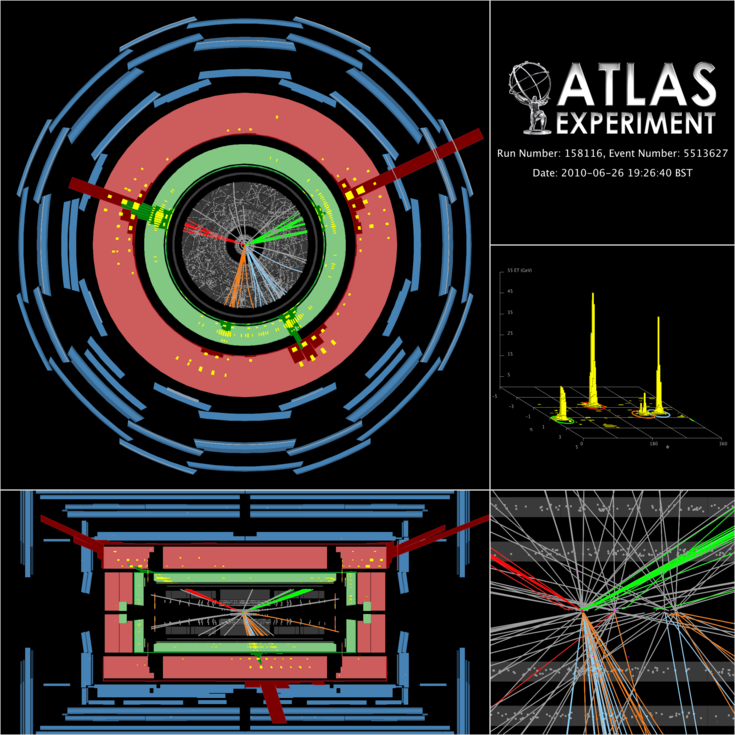
General Contacts
If you have questions of organisational nature, or if you would like to have some advice which master thesis topic would be most suitable for you please contact
If you have already spotted your favorite topic or you have questions concerning a specific topic you can also address directly the contact person indicated for each topic.
Physics of the Top Quark and Quantum-Chromo-Dynamics (QCD)
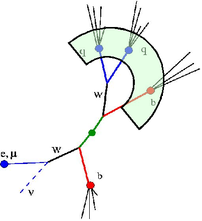 The top quark and QuantumChromoDynamics (QCD) are two parts of the standard model of particle physics which deserve detailed studies using the ATLAS experiment at LHC. Since LHC collides protons, QCD is the main interaction taking place between the constituents of the colliding particles. Understanding these processes is mandatory before any noticed deviation can be claimed a signal of a new physics phenomena. The main object of research are jets of many particles originating from a highly energetic quark or gluon produced from a hard scattering process.
The top quark and QuantumChromoDynamics (QCD) are two parts of the standard model of particle physics which deserve detailed studies using the ATLAS experiment at LHC. Since LHC collides protons, QCD is the main interaction taking place between the constituents of the colliding particles. Understanding these processes is mandatory before any noticed deviation can be claimed a signal of a new physics phenomena. The main object of research are jets of many particles originating from a highly energetic quark or gluon produced from a hard scattering process.
The top quark is the heaviest known particle, whose properties are not fully investigated yet. Proton proton collisions at LHC are abundant with top quarks which allows to measure its properties with high precision. Also top quarks and additional jets are produced in the decay of a heavier quark from a hypothetical fourth generation.
Our research work is currently directed to:
- Top quark properties: production cross section, mass, decay modes and branching ratios, top-antitop quark spin correlation
- QCD multi-jet production, strong coupling constant, soft underlying event, multi-parton interactions
Topics for master theses in one of these areas involve the analysis of measured data using existing software tools, the selection of relevant signal events out of many competing processes, the comparison of the measured results to expectations obtained from simulation studies, the interpretation of the final results in terms of the observed quantity and the systematic uncertainties of the measurement. The actual work will require some software development in the framework of the existing analysis software tools using C++.
Contact
Prof. Dr. Otmar Biebel
Measurement of the Higgs self interaction
We have started investigations to measure the self interaction of the Higgs boson. This will provide the parameter λ of the Higgs potential. The shape of the Higgs potential is just the simplest conceivable choice which allows for a consistent theoretical treatment. However, deviations from it may be possible due to extensions of the standard model which are required for example in view of the metastability of the electroweak vacuum. So an experimental measurement of the value of λ is due.
The cross section of the Higgs self interaction process is tiny. Many competing processes provide final states which look very similar to a Higgs self interaction final state. Thus we investigate machine learning concept in general and neural networks in particular to separate the competing processes from the searched for Higgs self interaction.
Contact
Prof. Dr. Otmar Biebel
Detector R&D and Particle Identification
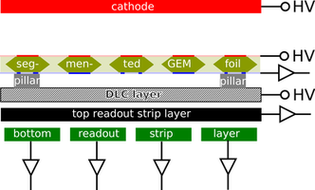
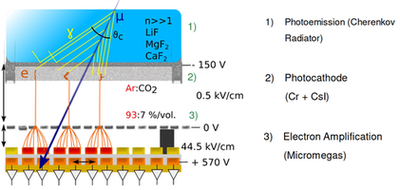
Segmented GEM Readout detector (schematic) Inverse RICH-Micromegas detector (working principle)
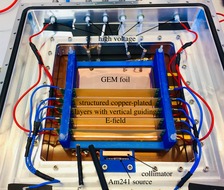
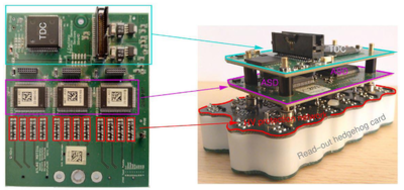
Triple-GEM for photon detection New RO electronic for the ATLAS phase II (s)MDT upgrade1
The extreme radiation background conditions at LHC require the development of new and radiation hard particle detectors which shall replace existing and less radiation tolerant detector technologies in the ATLAS detector. Furthermore an upgrade of the readout electronics of the ATLAS muon spectrometer for handling the increased luminosity of the HL-LHC is ongoing with a major contribution from our working group.
Our research is focused on
- Micro pattern gaseous particle detectors like MICROmesh GAseous Structures (Micromegas) or Gaseous Electron Multiplier (GEM); such detectors shall have a spatial resolution of 20 to 100 micron. Selected, current research projects are
- Segmented GEM Readout (SGR) detector
- Inverse Ring Imaging Cherenkov-Micromegas hybrid for momentum reconstruction
- Highly efficient triple-GEM photon detectors using multiple particle conversion layers to enhance the conversion probability
- Electret based Micromegas; as electric counterpart of a permanent magnet the electret allows for operation of Micromegas detectors without external power supply (e.g. for cosmic applications).
- Long-term irradiation and performance studies of ATLAS NSW Micromegas detectors
- Readout electronics testing and integration for the Phase II upgrade of the ATLAS muon spectrometer in our Cosmic Ray Facility.
Topics for master theses are directly connected to these areas of detector research & development. A thesis involves both hardware and software related work. This includes typically the conceptual planning of an experiment, setting-up the experimental apparatus, performing the measurements and, finally, analysing and interpreting the results from the measurement.
Contact
Prof. Dr. Otmar Biebel
Dr. Ralf Hertenberger
1https://cds.cern.ch/record/2770861/files/ATL-MUON-SLIDE-2021-175.pdf

